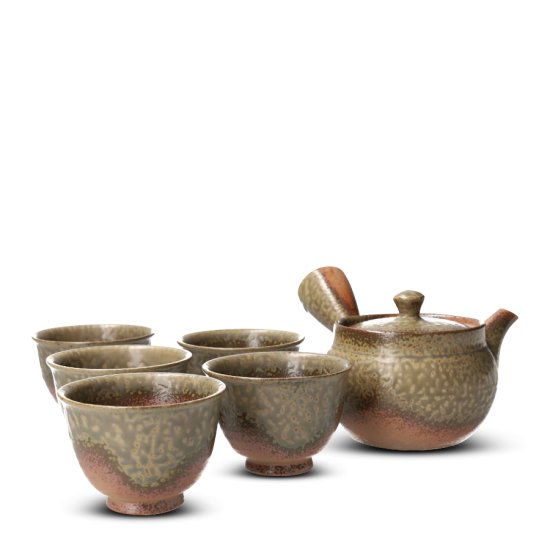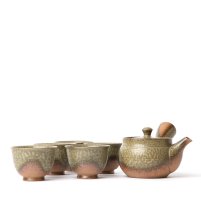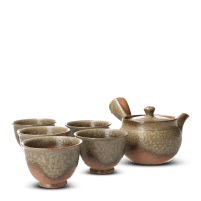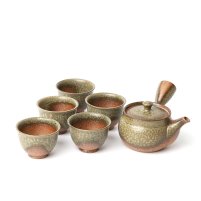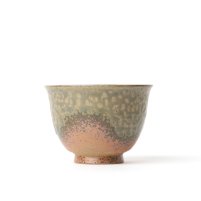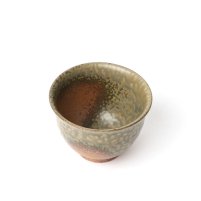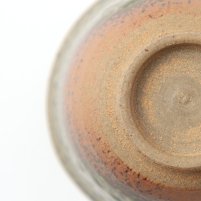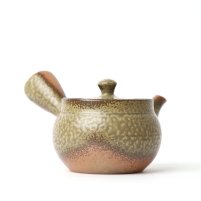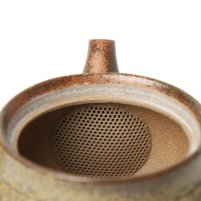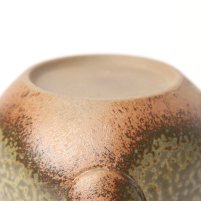Hand wash cups with warm water and a soft cloth or sponge, using washing-up liquid when necessary. Do not put in microwave or oven.
As with all unglazed Kyusu, wash the teapot with warm water and a soft cloth only. Do not use washing-up liquid or put in the dishwasher. Pat the outside dry with a towel and/or leave the Kyusu to air dry naturally with the lid off. If tea leaves get trapped in the strainer, brush away with a soft brush. Hard water may cause limescale deposits to develop, in which case rinse with soft bottled water, then wipe with a soft cloth.




